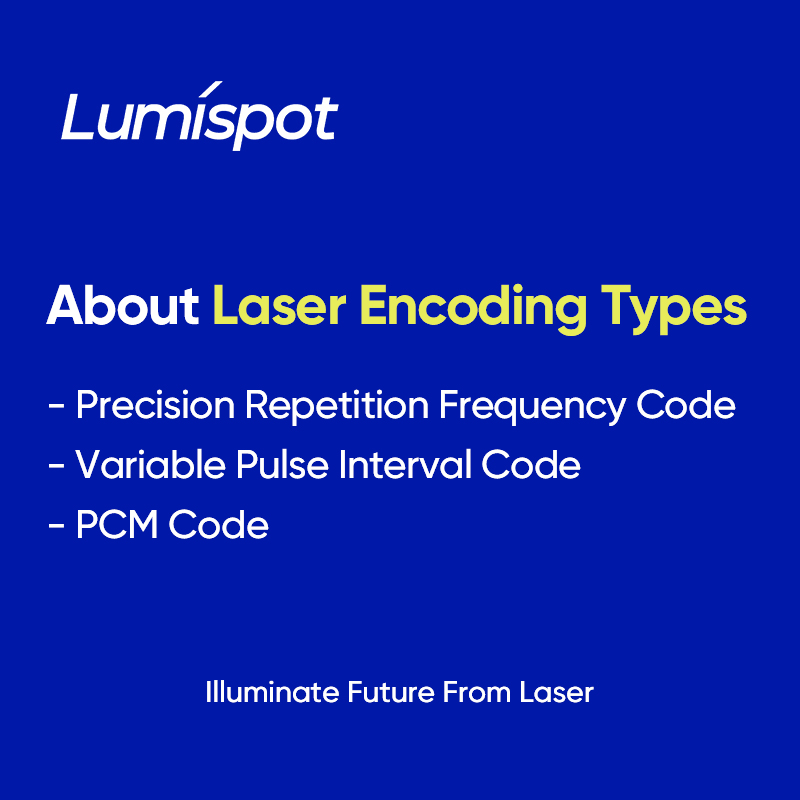As laser technology becomes increasingly widespread in fields such as ranging, communication, navigation, and remote sensing, the modulation and encoding methods of laser signals have also become more diverse and sophisticated. To enhance anti-interference capability, ranging accuracy, and data transmission efficiency, engineers have developed various encoding techniques, including Precision Repetition Frequency (PRF) Code, Variable Pulse Interval Code, and Pulse Code Modulation (PCM).
This article provides an in-depth analysis of these typical laser encoding types to help you understand their working principles, technical features, and application scenarios.
1. Precision Repetition Frequency Code (PRF Code)
① Technical Principle
The PRF code is a method of encoding that transmits pulse signals at a fixed repetition frequency (e.g., 10 kHz, 20 kHz). In laser ranging systems, each returned pulse is distinguished based on its precise emission frequency, which is tightly controlled by the system.
② Key Features
Simple structure and low implementation cost
Suitable for short-range measurements and high-reflectivity targets
Easy to synchronize with traditional electronic clock systems
Less effective in complex environments or multi-target scenarios due to the risk of “multi-value echo” interference
③ Application Scenarios
Laser rangefinders, single-target distance measurement devices, industrial inspection systems
2. Variable Pulse Interval Code (Random or Variable Pulse Interval Code)
① Technical Principle
This encoding method controls the time intervals between laser pulses to be random or pseudo-random (e.g., using a pseudo-random sequence generator), rather than fixed. This randomness helps to distinguish return signals and minimize multipath interference.
② Key Features
Strong anti-interference capability, ideal for target detection in complex environments
Effectively suppresses ghost echoes
Higher decoding complexity, requiring more powerful processors
Suitable for high-precision ranging and multi-target detection
③ Application Scenarios
LiDAR systems, counter-UAV/security monitoring systems, military laser ranging and target identification systems
3. Pulse Code Modulation (PCM Code)
① Technical Principle
PCM is a digital modulation technique where analog signals are sampled, quantized, and encoded into binary form. In laser communication systems, PCM data can be carried via laser pulses to achieve information transmission.
② Key Features
Stable transmission and strong noise resistance
Capable of transmitting various types of information, including audio, commands, and status data
Requires clock synchronization to ensure proper decoding at the receiver
Demands high-performance modulators and demodulators
③ Application Scenarios
Laser communication terminals (e.g., Free Space Optical communication systems), laser remote control for missiles/spacecraft, data return in laser telemetry systems
4. Conclusion
As the “brain” of laser systems, laser encoding technology determines how information is transmitted and how efficiently the system operates. From basic PRF codes to advanced PCM modulation, the choice and design of encoding schemes have become key to optimizing laser system performance.
Selecting an appropriate encoding method requires comprehensive consideration of the application scenario, interference levels, number of targets, and system power consumption. For example, if the goal is to build a LiDAR system for urban 3D modeling, a variable pulse interval code with strong anti-jamming capability is preferred. For simple distance measurement instruments, a precision repetition frequency code may suffice.
Post time: Aug-12-2025

